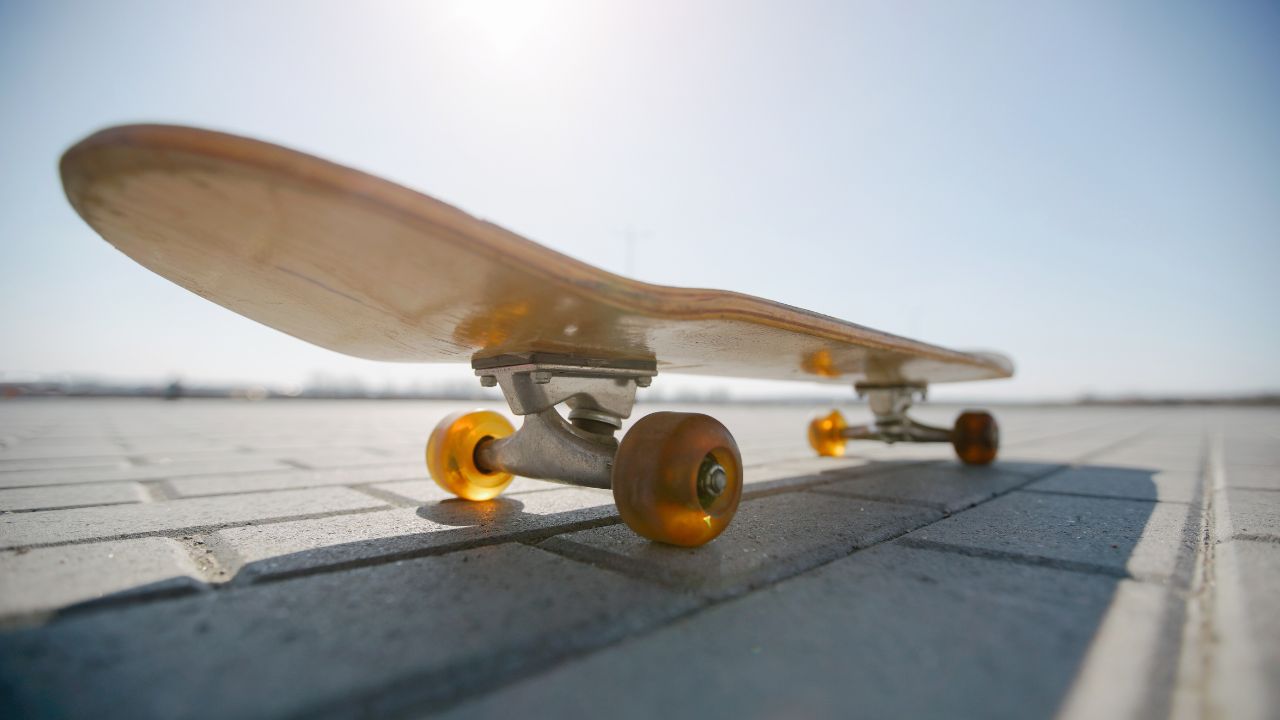

Choosing the right skateboard deck can make or break your skating experience. Whether you’re a beginner looking for stability or a seasoned skater chasing precision, your deck’s size, shape, and material all play a crucial role. In this ultimate guide, we’ll break down everything you need to know—from deck width and concave types to materials and design—so you can find the perfect fit for your style. By the end, you’ll have the knowledge to confidently pick a skateboard deck that feels right and performs like a dream.
Choosing the right skateboard deck is the foundation of a great skateboarding experience. Your deck determines not only how comfortable your ride will be but also how well you can perform tricks, turns, and maneuvers. A well-chosen deck matches your body size, riding style, and skill level, making skateboarding safer and more enjoyable. Many beginners make the mistake of picking a skateboard solely based on graphics or brand names, but the truth is—shape, size, and construction matter much more.
A skateboard deck isn’t just a flat piece of wood; it’s the heart of your setup. The wrong deck size can make your balance feel off, cause discomfort, and limit your performance. On the other hand, the right deck will feel like an extension of your body, responding smoothly to your movements.
In this guide, we’ll break down everything you need to know before buying your skateboard deck. From width and shape to concave and materials, you’ll learn exactly what to look for based on your style—whether it’s street tricks, cruising, or skatepark shredding. By the end, you’ll be ready to confidently pick the perfect deck that helps you progress faster and enjoy every ride.
Skateboard decks come in a variety of sizes and shapes, and each option has its own unique purpose. The most important dimension to consider is deck width, typically ranging between 7.5 inches to 8.5 inches. Narrow decks are lighter and easier to flip, making them ideal for technical street tricks. Wider decks offer more stability, perfect for cruising, vert ramps, and beginners who need a solid balance point.
Length also plays a role. Most decks are between 28 to 32 inches long, but the shape—such as popsicle (the standard rounded nose and tail), old school (wider nose with a flat tail), or cruiser shapes—affects performance. For instance, popsicle decks are versatile for both street and park skating, while cruiser decks are built for comfort and smooth rides.
You’ll also find differences in nose and tail shape. A steeper nose provides better control for tricks, while a flatter shape offers a smoother ride. Choosing the right size and shape comes down to personal preference, riding style, and comfort.
The golden rule is: if you’re into tricks, go narrower; if you prefer stability or ramps, go wider. Always test different shapes before making your final decision.
The width of your skateboard deck is one of the biggest factors that will affect your performance. While 7.5–8.0 inches is common for street skating, 8.0–8.5 inches is ideal for skateparks, pools, and vert skating.
Here’s a quick breakdown:
Your shoe size also matters—larger feet work better with wider decks, while smaller feet feel more comfortable on narrower ones. For example, if you wear a size 10 US shoe, you might feel more secure on an 8.25-inch deck.
If you’re unsure, start with a medium width around 8.0 inches—it offers a good balance between stability and trick performance. Remember, there’s no one-size-fits-all rule. Your ideal deck width is a mix of personal comfort, riding terrain, and skill level.
The concave of a skateboard deck refers to the curve between its edges. It may seem like a small detail, but it greatly affects your control and trick potential.
There are three common types of concave:
The shape profile also matters. Standard popsicle decks have symmetrical nose and tail shapes, making them versatile for any style. Old-school shapes have a wider nose and flat tail, great for carving and transition skating. Cruiser decks often have a pointed nose and wider body for comfortable, stable rides.
If you’re a beginner, medium concave is a safe choice—it provides enough control without feeling restrictive. As you gain experience, you might experiment with different concaves to match your style. In short, concave influences how the board feels under your feet and how responsive it is to your movements.
Most skateboard decks are made from 7-ply maple wood, known for its strength and flexibility. This layered construction is glued together under high pressure, creating a durable yet lightweight board. Canadian maple is the industry standard because it offers the perfect balance of pop (springiness) and durability.
In recent years, brands have experimented with bamboo, fiberglass, and carbon fiber layers for added strength and lighter weight. These high-tech materials can improve performance, but they also increase cost.
There’s also a difference between cold-pressed and heat-pressed decks. Cold pressing is believed to create stronger glue bonds, resulting in longer-lasting boards. Heat pressing is faster and more affordable but can slightly reduce durability.
If you’re skating hard daily, investing in a premium deck with reinforced materials may be worth it. For casual riders, a standard maple deck works perfectly fine.
Ultimately, construction affects how your deck feels, performs, and lasts. Always check the material specifications before buying—because what’s inside your board matters just as much as how it looks.
Most skateboard decks are made from 7-ply maple wood, known for its strength and flexibility. This layered construction is glued together under high pressure, creating a durable yet lightweight board. Canadian maple is the industry standard because it offers the perfect balance of pop (springiness) and durability.
In recent years, brands have experimented with bamboo, fiberglass, and carbon fiber layers for added strength and lighter weight. These high-tech materials can improve performance, but they also increase cost.
There’s also a difference between cold-pressed and heat-pressed decks. Cold pressing is believed to create stronger glue bonds, resulting in longer-lasting boards. Heat pressing is faster and more affordable but can slightly reduce durability.
If you’re skating hard daily, investing in a premium deck with reinforced materials may be worth it. For casual riders, a standard maple deck works perfectly fine.
Ultimately, construction affects how your deck feels, performs, and lasts. Always check the material specifications before buying—because what’s inside your board matters just as much as how it looks.
Before you commit to a deck, consider where and how you’ll ride most often. If your goal is to master technical tricks, go for a narrower popsicle deck with medium-to-high concave. If you’re all about cruising, opt for a wider cruiser shape with low concave for a stable, smooth ride.
Always think about your shoe size, terrain, and skill level when making a choice. Beginners often benefit from wider decks for stability, while experienced riders fine-tune their setups for specific tricks.
If possible, try out different decks before buying. Many local skate shops let you test boards, and some even offer trade-in programs. Reading reviews and asking for recommendations from experienced skaters can also guide you toward the right choice.
Lastly, remember that skateboard decks wear out over time, no matter how good they are. Wood chips, pop fades, and cracks happen—it’s part of skateboarding. The key is finding a deck that feels like a natural extension of you so you can ride confidently, progress faster, and enjoy every session.
Beginners usually do best with a skateboard deck between 8.0 to 8.25 inches wide. This size offers a balance of stability for learning and enough agility for basic tricks. If you have smaller feet or want to focus on technical tricks, you can go slightly narrower (7.75–8.0 inches).
Your ideal deck width depends on your riding style, shoe size, and terrain. Narrow decks (7.5–8.0 inches) are great for street tricks, while wider decks (8.25+ inches) provide stability for ramps, cruising, and bowls.
Yes. Concave affects how the board feels under your feet and how easily you can perform tricks. Low concave offers stability for cruising, medium concave works for all-around skating, and high concave gives more control for technical tricks.
Most decks are made from 7-ply Canadian maple, which is strong and flexible. Premium options may include bamboo, fiberglass, or carbon fiber layers for extra strength and lighter weight.
You can, but it’s not recommended. While graphics add personal style, you should prioritize deck size, shape, concave, and material to ensure the best performance and comfort.
It depends on how often you skate and your riding style. Frequent skaters may need a new deck every 1–3 months, while casual riders can make theirs last 6–12 months or more.
Yes, generally a wider deck (8.25 inches or more) provides more stability, which is helpful for beginners learning balance and basic control. However, it may feel heavier for tricks.

Learn how to choose the right skateboard deck with our ultimate guide. Explore sizes, shapes, materials, and tips for your perfect ride.